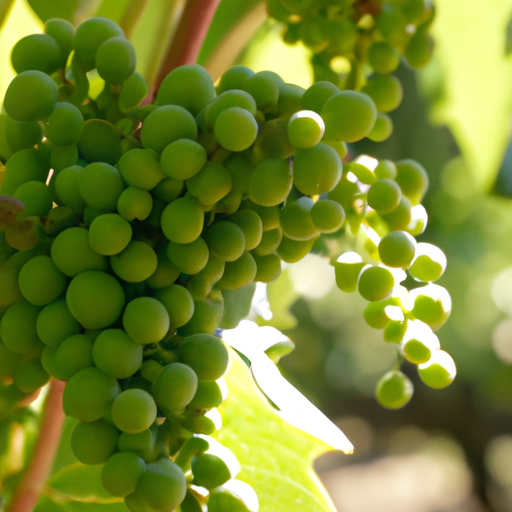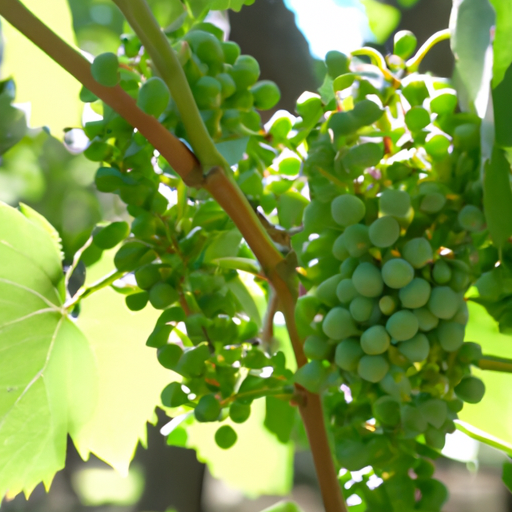
The Importance of Soil Composition in Grape Growing at Jordan Vineyard
The process of growing grapes at Jordan Vineyard is a meticulous and intricate one, with every step carefully planned and executed to ensure the highest quality grapes. One of the most important factors in grape growing is the soil composition, as it plays a crucial role in the overall health and development of the vines.
At Jordan Vineyard, the soil composition is carefully analyzed and monitored to ensure that it is optimal for grape growing. The vineyard is located in the Alexander Valley region of Sonoma County, California, which is known for its diverse soil types. The soil at Jordan Vineyard is a combination of clay, loam, and gravel, which provides a balanced environment for the vines to thrive.
The soil composition at Jordan Vineyard is important for several reasons. First and foremost, it affects the drainage capabilities of the soil. Grapes require well-drained soil to prevent waterlogging, which can lead to root rot and other diseases. The clay component of the soil at Jordan Vineyard helps to retain moisture, while the gravel component ensures that excess water drains away, creating the perfect balance for grape growing.
In addition to drainage, the soil composition also affects the nutrient content available to the vines. Different soil types have different nutrient profiles, and it is important to ensure that the soil at Jordan Vineyard has the right balance of nutrients for optimal grape growth. The loam component of the soil provides a good balance of organic matter and minerals, while the clay component helps to retain these nutrients and make them available to the vines.
To maintain the optimal soil composition, Jordan Vineyard employs various techniques. One such technique is cover cropping, where specific plants are grown between the vine rows to improve soil fertility. These cover crops help to add organic matter to the soil, which in turn improves its structure and nutrient content. Additionally, cover cropping helps to prevent erosion and control weeds, further enhancing the health of the soil.
Another technique used at Jordan Vineyard is soil testing. Regular soil testing allows the vineyard team to monitor the nutrient levels in the soil and make any necessary adjustments. This ensures that the vines have access to the nutrients they need for healthy growth and development. Soil testing also helps to identify any imbalances or deficiencies in the soil, allowing for targeted fertilization if needed.
In conclusion, the soil composition at Jordan Vineyard plays a vital role in the grape growing process. The combination of clay, loam, and gravel provides the perfect environment for the vines to thrive. The soil composition affects the drainage capabilities and nutrient content of the soil, both of which are crucial for grape growth. Through techniques such as cover cropping and soil testing, Jordan Vineyard ensures that the soil composition remains optimal, resulting in high-quality grapes and exceptional wines.
Pruning Techniques for Optimal Grape Growth at Jordan Vineyard

The process of growing grapes at Jordan Vineyard involves several important steps to ensure optimal grape growth and quality. One of the key techniques used at the vineyard is pruning, which plays a crucial role in shaping the vines and promoting healthy grape development.
Pruning is typically done during the dormant season, which is usually in late winter or early spring. This is when the vines are not actively growing, making it easier to work with them. The main purpose of pruning is to remove excess growth and shape the vine in a way that allows for better air circulation and sunlight exposure.
At Jordan Vineyard, the pruning process begins with the removal of any dead or diseased wood. This helps to prevent the spread of diseases and ensures that the vine is healthy and strong. Next, the vineyard workers carefully select the best canes to keep, based on their age and position on the vine. These canes will serve as the foundation for the new growth and fruit production.
Once the canes are selected, they are pruned back to a specific length, usually leaving around 8 to 10 buds per cane. This helps to control the amount of fruit that the vine will produce and ensures that the grapes will ripen evenly. It also allows for better air circulation and sunlight penetration, which is essential for preventing diseases and promoting optimal grape development.
In addition to pruning the canes, the vineyard workers also pay close attention to the positioning of the shoots. Shoots that grow in a downward direction are removed, as they are less likely to receive adequate sunlight. This helps to redirect the vine’s energy towards the upward-growing shoots, which will produce better quality grapes.
Another important aspect of pruning at Jordan Vineyard is the use of trellising systems. These systems provide support for the vines and help to keep them off the ground, reducing the risk of disease and improving air circulation. The most common trellising system used at the vineyard is the vertical shoot positioning (VSP) system, which involves training the shoots to grow vertically along a series of wires.
Throughout the pruning process, the vineyard workers take great care to ensure that each vine is pruned with precision and attention to detail. This requires a deep understanding of the vine’s growth patterns and the specific needs of each grape variety. It is a labor-intensive task that requires skill and expertise, but it is essential for maintaining the health and productivity of the vineyard.
In conclusion, pruning is a vital technique used at Jordan Vineyard to promote optimal grape growth. It involves removing excess growth, shaping the vines, and ensuring proper air circulation and sunlight exposure. By carefully selecting and pruning the canes, as well as using trellising systems, the vineyard workers at Jordan Vineyard are able to create an environment that allows the grapes to thrive and produce high-quality wines.
Harvesting and Wine Production Process at Jordan Vineyard
The process of growing grapes at Jordan Vineyard is a meticulous and time-consuming endeavor. From the initial planting to the final harvest, every step is carefully planned and executed to ensure the production of high-quality wines. In this section, we will explore the harvesting and wine production process at Jordan Vineyard.
Harvesting is a critical stage in grape cultivation, as it determines the quality and flavor profile of the wines. At Jordan Vineyard, the grapes are hand-picked to ensure that only the best fruit is selected. This labor-intensive method allows for careful inspection of each grape cluster, ensuring that only fully ripe and healthy grapes are harvested.
Once the grapes are harvested, they are transported to the winery for the wine production process. The first step in this process is destemming and crushing the grapes. This is done to separate the grape berries from the stems and release the juice. At Jordan Vineyard, this is done using state-of-the-art equipment that gently crushes the grapes without damaging the seeds or skins.
After the grapes are crushed, the juice is transferred to fermentation tanks. At Jordan Vineyard, both stainless steel tanks and oak barrels are used for fermentation. Stainless steel tanks are preferred for white wines, as they allow for precise temperature control and prevent oxidation. Oak barrels, on the other hand, are used for red wines to impart flavors and aromas from the wood.
During fermentation, yeast converts the sugars in the grape juice into alcohol. This process can take anywhere from a few days to several weeks, depending on the desired style of wine. At Jordan Vineyard, the fermentation process is closely monitored to ensure that the wines develop the desired flavors and aromas.
Once fermentation is complete, the wines are aged in oak barrels. This aging process allows the wines to develop complexity and depth of flavor. At Jordan Vineyard, the wines are aged for varying lengths of time, depending on the wine style. For example, the Chardonnay is aged for 9 months, while the Cabernet Sauvignon is aged for 12 months.
After aging, the wines are carefully blended to achieve the desired flavor profile. This is done by combining wines from different barrels or tanks to create a harmonious and balanced final product. At Jordan Vineyard, the blending process is done by the winemaker, who uses their expertise and palate to create wines that reflect the unique terroir of the vineyard.
Once the wines are blended, they are bottled and labeled. At Jordan Vineyard, great care is taken in the bottling process to ensure that the wines are not exposed to oxygen, which can degrade their quality. The bottles are then stored in a temperature-controlled cellar to allow them to further develop and mature.
In conclusion, the harvesting and wine production process at Jordan Vineyard is a labor of love. From hand-picking the grapes to carefully blending and aging the wines, every step is taken to ensure the production of exceptional wines. The dedication and attention to detail of the winemakers at Jordan Vineyard are evident in every bottle, making it a destination for wine enthusiasts around the world.






